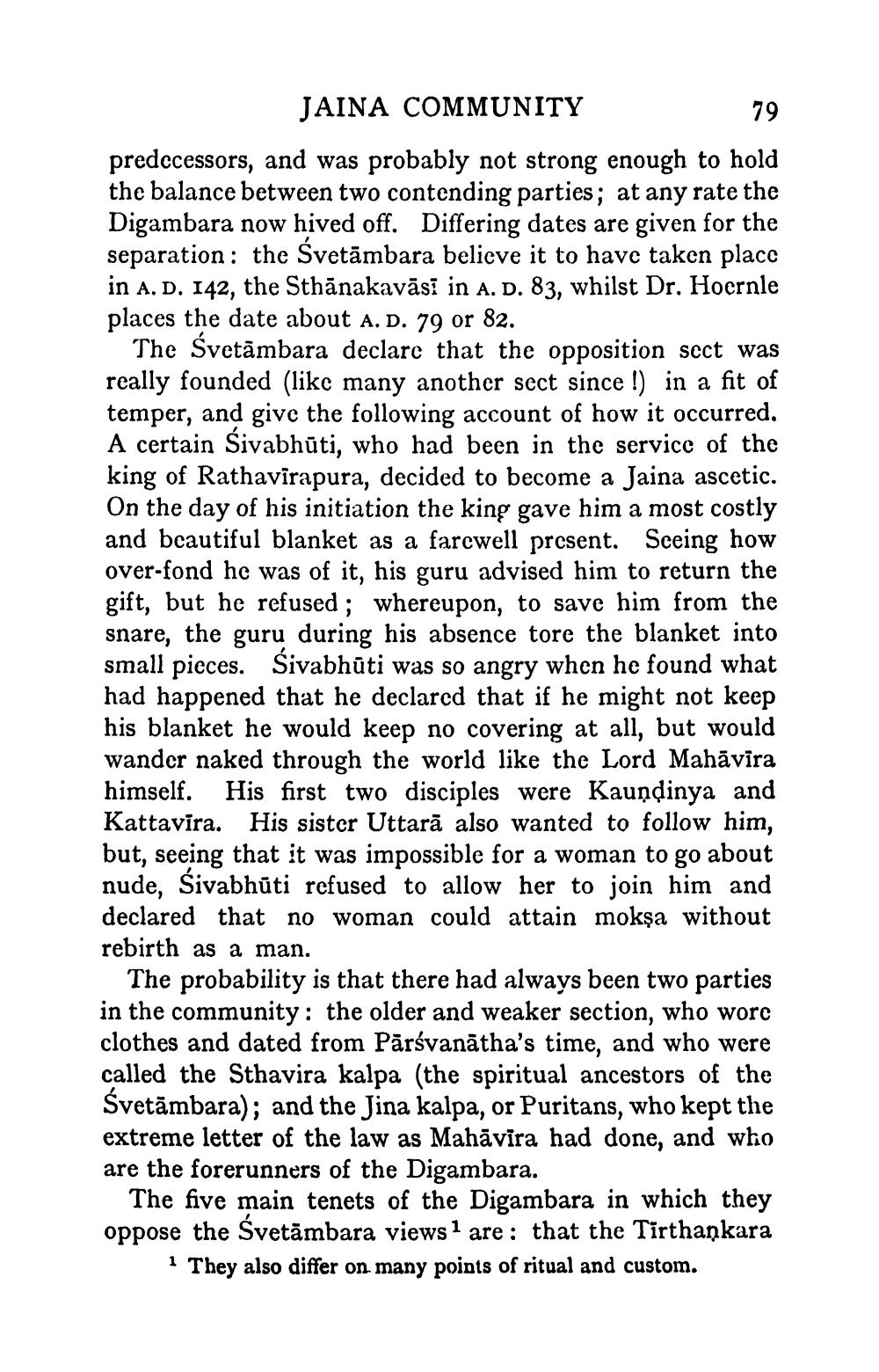________________
JAINA COMMUNITY
79
predecessors, and was probably not strong enough to hold the balance between two contending parties; at any rate the Digambara now hived off. Differing dates are given for the separation: the Svetāmbara believe it to have taken placc in A. D. 142, the Sthānakavāsi in A. D. 83, whilst Dr. Hoernle places the date about A. D. 79 or 82.
The Svetāmbara declare that the opposition sect was really founded (like many another sect since !) in a fit of temper, and give the following account of how it occurred. A certain Sivabhūti, who had been in the service of the king of Rathavirapura, decided to become a Jaina ascetic. On the day of his initiation the king gave him a most costly and beautiful blanket as a farcwell present. Sceing how over-fond he was of it, his guru advised him to return the gift, but he refused; whereupon, to save him from the snare, the guru during his absence tore the blanket into small pieces. Śivabhūti was so angry when he found what had happened that he declared that if he might not keep his blanket he would keep no covering at all, but would wander naked through the world like the Lord Mahāvira himself. His first two disciples were Kauņņinya and Kattavira. His sister Uttarā also wanted to follow him, but, seeing that it was impossible for a woman to go about nude, Śivabhūti refused to allow her to join him and declared that no woman could attain mokşa without rebirth as a man.
The probability is that there had always been two parties in the community: the older and weaker section, who wore clothes and dated from Pārsvanātha's time, and who were called the Sthavira kalpa (the spiritual ancestors of the Śvetāmbara); and the Jina kalpa, or Puritans, who kept the extreme letter of the law as Mahāvira had done, and who are the forerunners of the Digambara.
The five main tenets of the Digambara in which they oppose the Svetāmbara views 1 are: that the Tīrthankara
1 They also differ on many points of ritual and custom.




